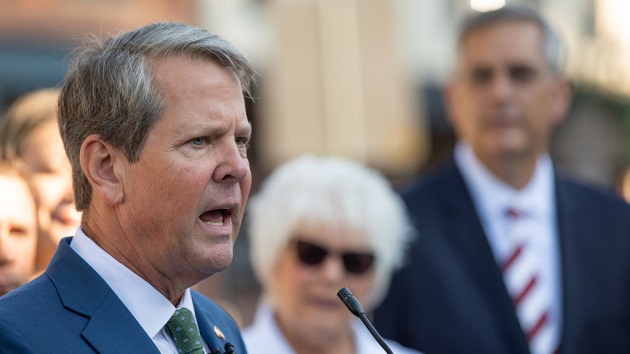
(WASHINGTON) — The Internal Revenue Service does not plan to use the nearly $80 billion it’s set to receive in funding from the Inflation Reduction Act to hire 87,000 new agents in order to target middle class Americans, a Treasury Department official told ABC News, rejecting a claim widely circulated by Republican lawmakers and right-wing media personalities.
A sizable portion of the money will go toward improving taxpayer services and modernizing antiquated, paper-based IRS operations, Treasury Department spokesperson Julia Krieger said, in an effort to update the agency — well documented as being chronically starved of resources for decades.
The agency also is planning on hiring auditors who can enforce the tax laws against high-income Americans and corporations, not the middle class, along with employees to provide customer service to taxpayers, the official said. The majority of hires will fill the positions of about 50,000 IRS employees on the verge of retirement, Krieger said, which will net about 20 to 30-thousand workers, not 87,000.
“The resources to modernize the IRS will be used to improve taxpayer services — from answering the phones to improving IT systems — and to crack down on high-income and corporate tax evaders who cost the American people hundreds of billions of dollars each year. The majority of new employees will replace the standard level of staff departures over the next few years,” Krieger said in a statement.
“New staff will be hired to improve taxpayer services and experienced auditors who can take on corporate and high-end tax evaders, without increasing audit rates relative to historical norms for people earning under $400,000 each year,” she said.
The IRA, the wide-ranging tax, climate and health care bill signed into law by Biden on Monday and touted as a major legislative achievement for Democrats, includes roughly $78 billion for the IRS over the next 10 years.
The heightened funding will also act as a key part of how will provisions under the IRA will be paid for — increased tax enforcement of the wealthy and large corporations is expected to raise revenue by $204 billion over the next decade, according to the Congressional Budget Office.
Congress has cut funding for the IRS for most of the past decade, leaving the agency with technology systems dating back to the 1970s and as of July, a backlog of over 10 million unprocessed individual returns, according to the IRS.
“Bringing IRS technology into the 21st century is long past due. Our technology system is over 60 years old, the oldest in government, and fuels both taxpayer frustration and government waste,” said Executive Director Chad Hooper of the Professional Managers Association – formed in 1981 by IRS managers.
Republicans, ahead of the midterm elections, have been denouncing the package as irresponsible spending while inflation reaches record highs. They’ve hammered the claim that the bill’s IRS provisions would would bad news for the middle class.
“Do you make $75,000 or less?” tweeted House Minority Leader Kevin McCarthy. “Democrats’ new army of 87,000 IRS agents will be coming for you—with 710,000 new audits for Americans who earn less than $75k.”
The 87,000 new agent number that GOP leaders have been circulating is in reference to a year-old report released by the IRS, which described what the agency could do with nearly $80 billion in new funding if Congress would pass the American Families Plan.
In a table in that report, the IRS shows by 2031 the IRS could increase the size of its workforce by 86,852 full-time employees. But most of those hires would not be IRS agents and wouldn’t be new positions, according to the Treasury official, and the report is not in reference to IRA funding.
The claims appeared to have been ramped up after last week’s FBI search of Trump’s Palm Beach residence, with GOP leaders capitalizing on current Republican mistrust of bureaucratic agencies.
The search is said to have been part of a wider investigation into whether Trump took classified documents from the White House at the end of his presidency, with no reports of a connection to the IRS.
“After todays raid on Mar A Lago what do you think the left plans to use those 87,000 new IRS agents for?” tweeted Sen. Marco Rubio, a Florida Republican, after news of the raid broke.
GOP voices have also claimed that the hypothetical IRS agent hiring splurge would include armed tax enforcers. Fox News host Tucker Carlson and guest U.S. Rep. Matt Gaetz, R-Fla. on Aug. 4 claimed the government is beginning to treat “the IRS as a military agency.”
“Well, Joe Biden is raising taxes, disarming Americans, so of course they are arming up the IRS like they are preparing to take Fallujah,” Gaetz said.
Treasury officials rejected the claim that agent hires would be carrying weapons — saying the faction of armed agents are an “extremely critical but small” piece of the IRS, representing less than 3% of its total workforce.
The armed agents do not interact with average Americans, they focus only on specialized issues like narcotics, money laundering and Bank Secrecy Act violations, they said. Recently, they’ve been involved in the task force that is tracking assets of Russian oligarchs.
But the widely debunked claims may have begun to have an impact on some American voters.
“Even the Democrats, they heard, they just hired 85,000 IRS agents, they’re not not happy about it,” said John Ellingson, an Iowa GOP strategist, noting that the claims have been widely discussed since the information has been circulated by leading Republican voices.
Democrats have attempted to quell concerns over assertions that average Americans might be targeted by the federal government.
Rep. Gerry Connolly, a Democrat from Virginia refuted GOP claims on Twitter, telling Americans they are “being lied to.”
“In typical fashion, Republicans have chosen to lie and embellish in order to scare the American people. There is no army of 87,000 new IRS agents. It’s entirely made up. The truth is that the Republican Party hollowed out the IRS and has repeatedly slashed its budget over the years. Rich tax cheats run wild, meanwhile the average American can’t even get someone from the IRS on the phone. The Inflation Reduction Act will restore the IRS so it actually works for the American people,” Connolly said in a statement to ABC News.
Copyright © 2022, ABC Audio. All rights reserved.









